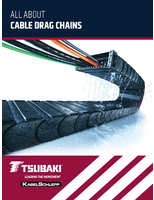ASTM Standard will provide rubber protein allergen tests.
Press Release Summary:
ASTM standard WK16334, Test Method for the Immunological Measurement of Four Principal Allergenic Proteins in Natural Rubber and Its Products, is being developed by Subcommittee D11.40 on Consumer Rubber Products. Allergenic proteins covered are Hev b 1 (rubber elongation factor), Hev b 3 (prenyltransferase), Hev b 5 (acid protein) and Hev b 6.02 (Hevein). Users of the standard include manufacturers of consumer and medical products as well as clinical or analytical laboratories.
Original Press Release:
Proposed ASTM Rubber Products Standard will Provide Allergen Tests
Testing for potent allergens in rubber is the purpose of a proposed new ASTM standard. WK16334, Test Method for the Immunological Measurement of Four Principal Allergenic Protein (Hev b 1, 3, 5 and 6.02) in Natural Rubber and Its Products, is being developed by Subcommittee D11.40 on Consumer Rubber Products, part of ASTM International Committee D11 on Rubber.
According to Timo Palosuo and Robert G. Hamilton, co-chairs of Task Group D11.40.08 on Immunoenzymetric Assay (IEMA), at least 13 Hevea brasiliensis (Hev b) natural rubber latex proteins have been identified as strong allergens that can induce allergic reactions such as rhinitis, asthma, hives and anaphylaxis in predisposed humans. Healthcare workers who use many natural rubber latex products (such as gloves) and children who need to have multiple surgeries (which require contact with rubber gloves and medical devices during procedures) are especially susceptible to allergic reactions caused by rubber proteins.
"Prior to this newly proposed standard, there has been no standardized assay method for measuring Hevea brasiliensis allergenic protein that is extractable from a rubber containing product," says Palosuo, professor emeritus, National Public Health Institute, Helsinki, Finland. "This proposed standard provides the first well-documented assays for measuring four of the principal 13 known Hev b allergens."
The allergenic proteins covered in the standard are Hev b 1 (rubber elongation factor), Hev b 3 (prenyltransferase), Hev b 5 (acid protein) and Hev b 6.02 (Hevein). These four are among the most highly sensitizing of the 13 Hev b allergens.
"The primary application of the assay is in the evaluation of extracts of products known or supposed to contain natural rubber latex," says Hamilton, professor of medicine and pathology, Johns Hopkins University School of Medicine, Baltimore, Md. "The four assays will permit an investigator to qualitatively (present or absent) and quantitatively (ng/ml) test the level of these principal allergenic proteins that are known to elicit sensitization and symptom induction in sensitized children and adults."
Hamilton and Palosuo say that there are two likely users of WK16334. Manufacturers of consumer and medical products that contain natural rubber latex will want to know if their process produces a product that can release allergenic Hevea proteins, and if so, what the relative levels of these proteins are. "They might change their process, for instance, by adding an additional washing step to reduce the releasable levels of Hev b allergens," says Hamilton. These users would include manufacturers of medical and consumer products that contain natural rubber latex, such as gloves, balloons and enclosures for pharmaceutical vials.
The second likely user of the proposed standard would be a clinical or analytical laboratory that is asked whether a particular product can release Hev b allergens when used. "These labs may provide a fee-for-service analytical measurement to a private or corporate client," says Hamilton. "An example of this is the school board that is concerned whether the ground-up automobile tire material being placed on their playground will present a concern of Hev b allergen exposure to a child that has a natural rubber latex allergy."
Interested parties are invited to join in the standards developing activities of Task Group D11.40.08, which will be focused on WK16334. "While we are always interested in improving our ability to measure more Hev b allergens with other IEMA assays in new standards, there is no thought at present to embark on this path," says Hamilton. "The one primary reason is the intense effort required to produce monoclonal antibody reagents and standards for the other Hev b allergens. Second, the measurement of other Hev allergens may not add significantly to one's ability to assess and monitor the relative safety of a product that is known to contain natural rubber latex."
For further technical information, contact Timo Palosuo, National Public Health Institute, Helsinki, Finland (phone: +358-40-514 3360; timo.palosuo@ktl.fi); or Robert G. Hamilton, Johns Hopkins University School of Medicine, Baltimore, Md. (phone: 410/550-2031; rhamilto@jhmi.edu). Committee D11 meets Dec. 3-6 at the December committee week in Tampa, Fla. For membership or meeting information, contact Joe Koury, Technical Committee Operations, ASTM International (phone: 610/832-9804; jkoury@astm.org).




